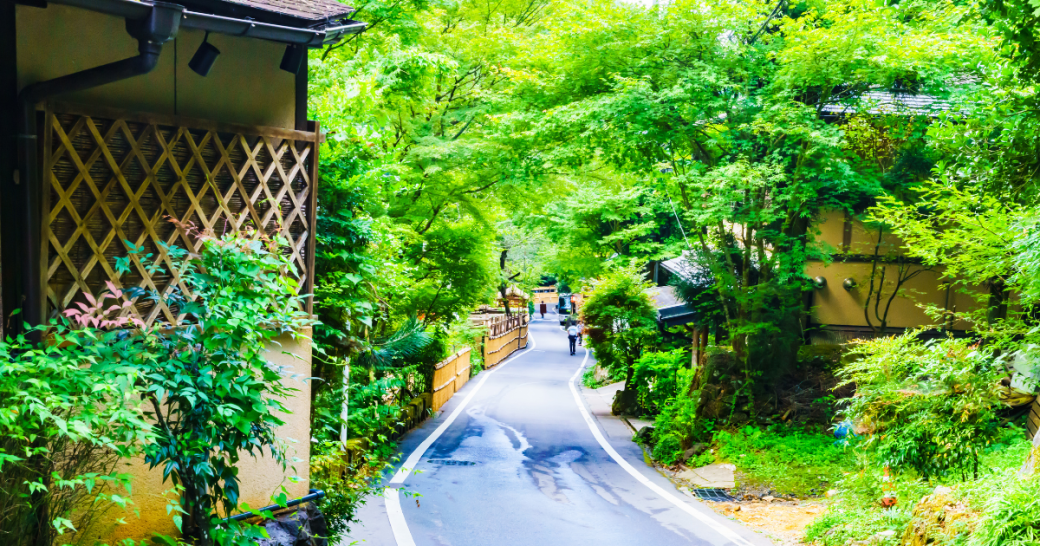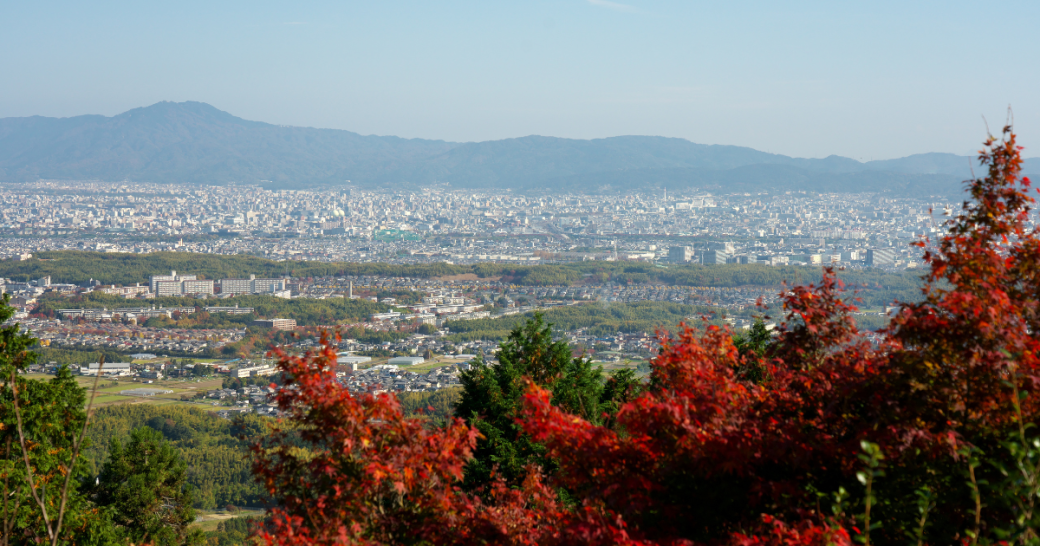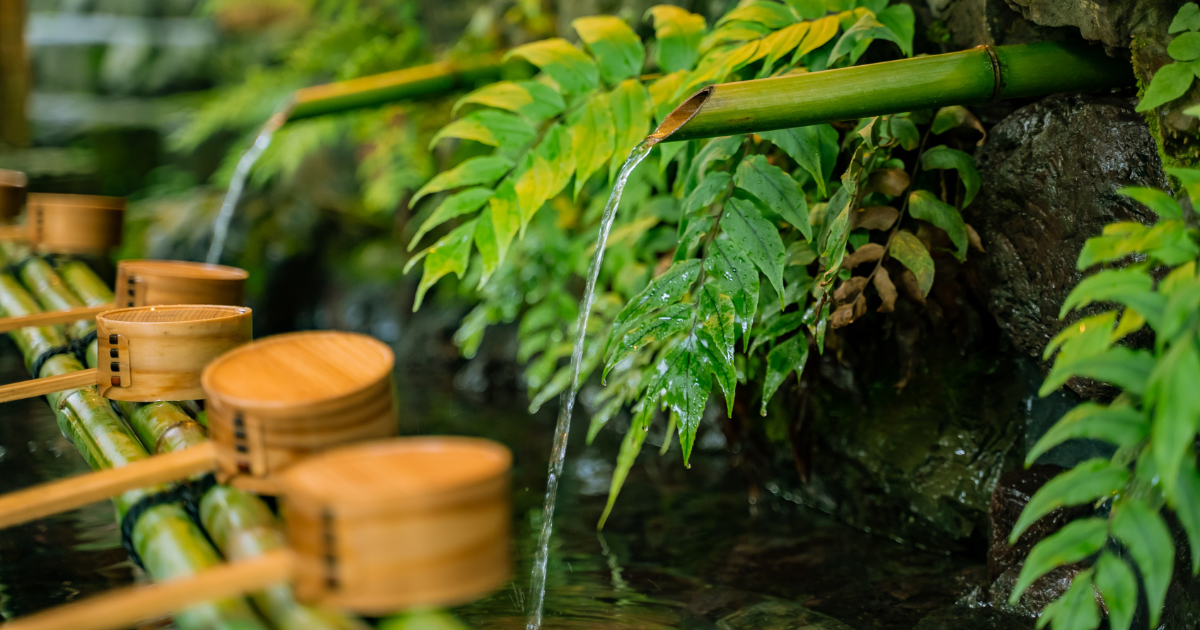Hidden Gems of Kyoto: A Journey off the Tourist Trail
Posted by Sarah
Kyoto is a must visit destination for any Japan traveller. Whilst the shimmering golden tiers of the Kinkaku-ji pavilion and vermillion torii of Fushimi Inari shrine draw thousands of visitors each day, Kyoto’s true appeal lies in its hidden gems dotted in and around the city. Beyond the well-trodden paths lie secret gardens, quiet alleys, and tucked-away restaurants that add an extra layer of enchantment to this ancient city.
From Kibune to Kurama
The Kibune to Kurama hike is a popular walking trail in the picturesque northern mountains of Kyoto, winding through some of the city’s most tranquil villages. This scenic trail takes you through lush forests, tiptoeing past ancient Shinto shrines, and offers breathtaking views of the surrounding peaks.
The hike usually begins in Kibune, a quaint little village known for its riverside restaurants that feature traditional dining platforms (kawadoko) perched above the flowing water of the Kamo river. Kyoto residents have been flocking to kawadoko for centuries to escape the summer heat and experience a moment of tranquillity. Diners can enjoy the unique experience of relaxing mere feet above the river; refreshed by a pleasant mist, the water carries away the heat and worries of modern life.
Kifune-jinja, a dreamy Shinto shrine dedicated to the goddess of water, is a great stop off on your journey. Rows of bright red lanterns stand out from the lush green of the surroundings and herald your way up the steep steps leading to the shrine. Once you’ve paid your respects to the water goddess, continue on your hike until you reach Kurama-dera Temple, an ancient Buddhist temple perched on the mountainside. The temple is known for its red buildings, mystical atmosphere, and the annual fire festival held in October.
The hike typically takes around 2 to 3 hours, depending on your pace, but you could spend the whole day bathing in the calm serenity of this gorgeous area. If your legs are tired after a long day of hiking, enjoy a train ride back from Kurama to central Kyoto.

The Western Temple of Yoshimine
Yoshimine-dera Temple is situated in the Nishikyō Ward of Kyoto. For those looking to escape the crowds of more popular tourist sites like Kiyomizu-dera Temple, but still take in panoramic views of Kyoto, this is the perfect spot to visit. Nestled in the lush mountains, the peaceful atmosphere will envelop you as soon as you set foot in the temple grounds. Yoshimine-dera Temple’s history is long, being established back in 1029 by the Tendai sect of Buddhism. It has gone through many transformations over this period, now a sanctuary of tranquillity.
Spring and autumn is when Yoshimine-dera Temple really comes to life – cherry blossom trees blushing across the mountain in spring and autumn painting the trees a fiery red. Built as one with nature, take your time to soak in the powerful energy coursing through this area. Adventurous explorers will find something to capture their imaginations in each nook and cranny of Yoshimine-dera Temple. When making the pilgrimage up to Yakushi-do, one of the complex’s most historic buildings, don’t forget to look back and drink in the gorgeous view of Kyoto City stretching out below.

The Temple of Shisen-do
Shisen-dō Temple is known for its tranquil atmosphere and the integration of art, poetry, and Zen philosophy. It is a lesser-known gem compared to some of Kyoto’s more famous temples, making it a peaceful and contemplative place for those seeking a more intimate experience.
Shisen-dō Temple is situated in the Sakyo Ward of Kyoto, not far from the Philosopher’s Path, which is a renowned canal-side walking path lined with hundreds of cherry trees. The temple was founded by the Zen monk Ishikawa Jōzan in 1641. Jōzan, also known as Sōken, was a scholar, poet, and tea master. Shisen-dō served as his retirement villa before later being converted into a temple.
Shisen-dō Temple is known for its unique and elegant architecture. The main building features a study with intricate wooden carvings and a room filled with calligraphy, paintings, and other artistic treasures. One of the notable features of Shisen-dō Temple is the Shisen-kai, or the Hall of Poets. This small building is dedicated to Jōzan’s poetry and literary works. A visitor could spend many hours delving into the history or simply bathing in the zen atmosphere.
Further Afield: The Shores of Lake Biwa
Many travellers will not make the short journey out of Kyoto City to the shores of Lake Biwa, but those who do are greatly rewarded. Omimaiko Beach greets visitors with a warm, sandy shoreline and a breathtakingly calm expanse of water stretching as far as the eye can see. Lake Biwa is Japan’s largest freshwater lake and is where locals go to cool off and enjoy fun lakeside activities during the hot summer months.

The beach provides panoramic views of Lake Biwa and the surrounding mountains if you want to spend a day lazing in the sun and simply enjoy the natural beauty of the area. Visitors can enjoy various beach activities such as swimming, sunbathing, and picnicking. Those itching to get a bit more active won’t be disappointed either with paddleboarding, kayaking, windsurfing and cycle hire available. The cycle path winding around the unbelievably large lakeshore offers a leisurely peek into the local area which most tourists never see.
In cherry blossom season, escape the frantic crowds flooding to Kyoto City and head to Kaizu Osaki, a peninsula jutting into Lake Biwa. With over 800 cherry trees lining the shore, you can’t experience hanami (cherry blossom viewing) in a more idyllic location. Hop on a lake cruise and take in the full beauty of the avenue of trees, stretching their delicate branches out over Lake Biwa.
Head off the beaten track with us by talking to one of our team today. Our tour consultants know Kyoto like the back of their hand and can take you on a journey less travelled.

